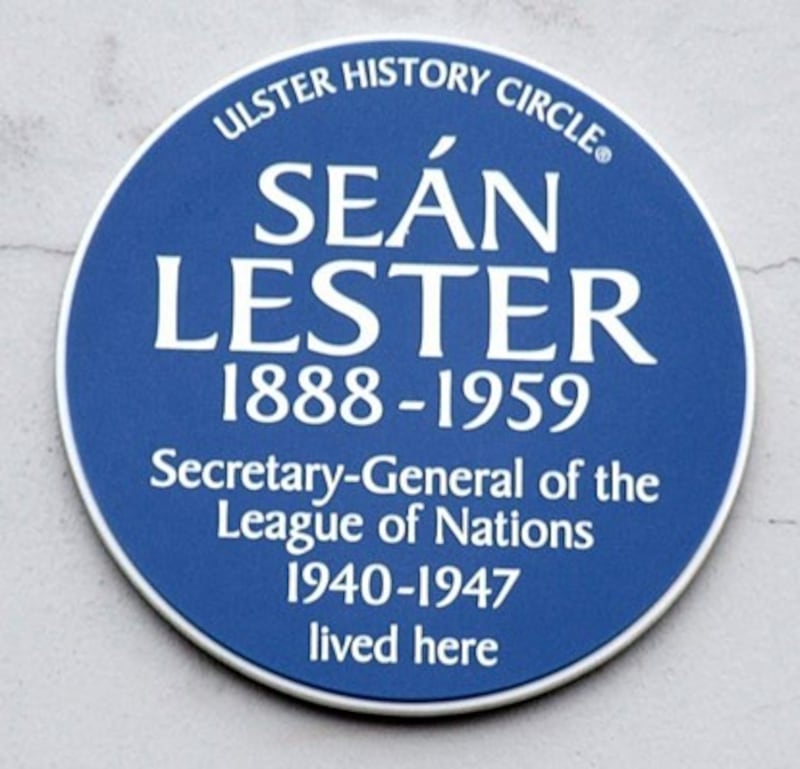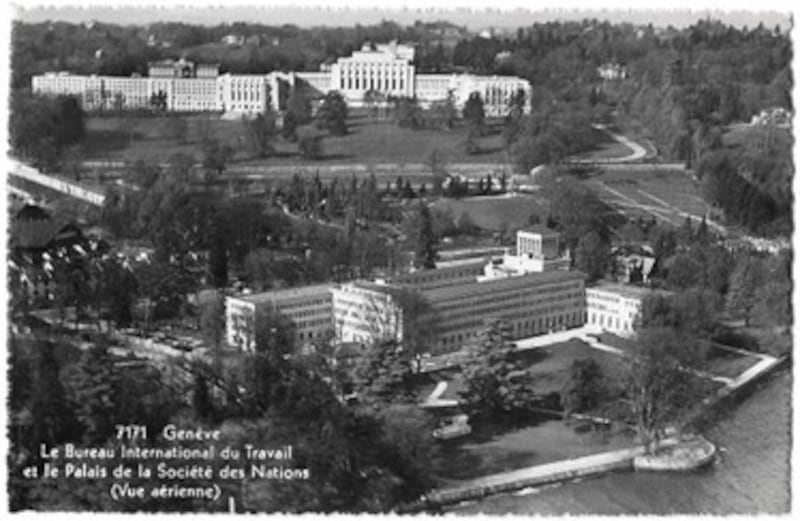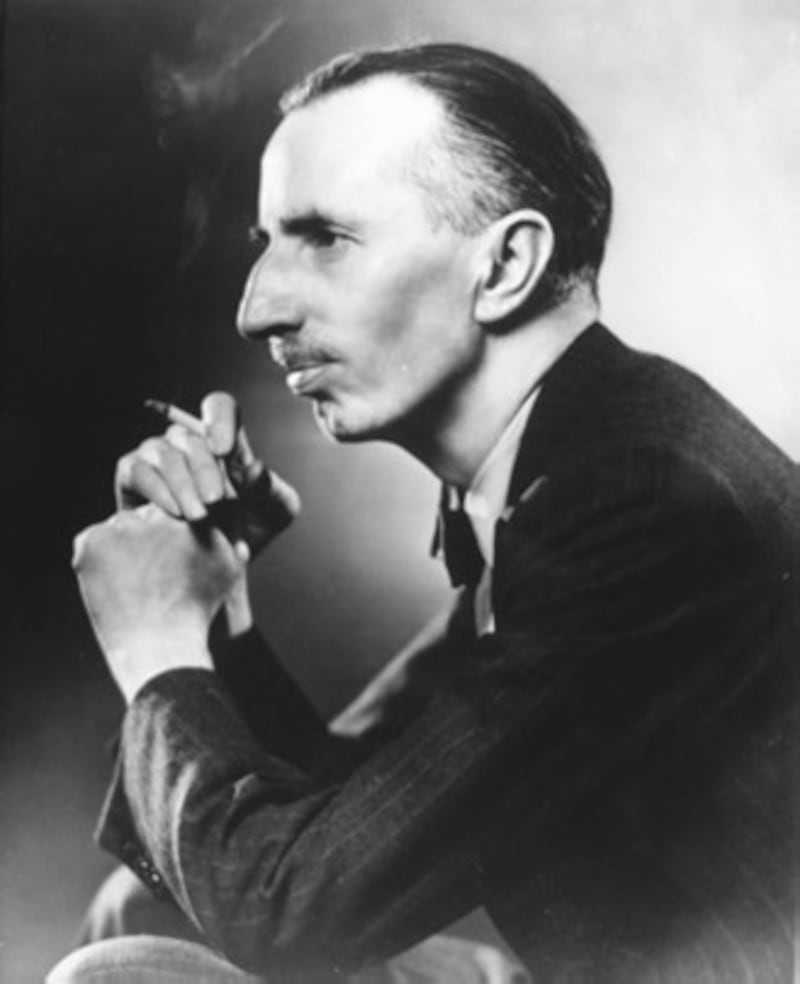For most of the second World War, the two most important international organisations in the world were headed by Irish citizens: Seán Lester and Edward Phelan. The Irish Influence traces the careers and legacies of these two contrasting diplomats who played a significant role in the development of international relations and multilateralism in the 20th century.
Lester was an important actor in the League of Nations, rising to become Secretary-General. He led the organisation in its most difficult years approaching and during the second World War. Phelan joined the International Labour Organization as ‘the first international civil servant’ and became Director-General. Both were committed citizens of Ireland and international peace-builders. Their legacy is testimony to the Irish influence in the politics of international institutions. On the centenary of the Irish Free State joining the League of Nations in 1923, their story reveals how important a role a small independent state like Ireland played – and could continue to play – in progressive international relations.

Edward Joseph Phelan had been born into a Catholic seafaring family in Tramore, Co Waterford in 1888. In that same year, John Ernest Lester was born into a Methodist, pro-Union, small business family in Carrickfergus, Co Antrim – both as British citizens into the United Kingdom of Great Britain and Ireland. Although they met occasionally in Dublin in the 1920s, in 1929 they found themselves in Geneva, the global centre of international diplomacy – Phelan as Chief of the Diplomatic Division of the International Labour Office (ILO); Lester – now known as Seán Lester – as Ireland’s representative at the League of Nations and the ILO. The ILO and the League had been created under the Treaty of Versailles in 1919 and put down roots in the Swiss city.
The Irish Influence is a human interest story that focuses on the relationship between Phelan and Lester, having as a backdrop the eventful yet turbulent history of the early days of the new Irish nation, as well as the international realignment following the first World War, the inter-war period, events leading to the second major global conflict, upheavals of wartime, and the relative peace that followed.
How to stop hungry slugs and snails from wreaking havoc in your garden
David McWilliams: Trump has managed to create something world has never seen: virulent Canadian nationalism
Someone eating cheese and onion crisps on the bus among callouts to gardaí
Pat Leahy: Enda Kenny’s life and times offer five lessons for today’s politicians
As two citizens of Ireland engaged in the affairs of the two most prominent international organizations of their time, they became close personal friends and collaborating officials. The paths that led them to Geneva were marked by numerous differences and a multiplicity of twists and turns. They were to move away from their home due to their fathers’ opportunities for advancement.

In 1892 the Lester family relocated to Belfast, a bustling industrial city where Robert John Lester had built a block of five houses on the Ormeau Road in the south of the city and opened a grocery store. Growing up in an area of mixed religious and political persuasions introduced the young Lester to a context much different from the predominantly Protestant environment of Carrickfergus. Having left Methodist College at the age of 14, he embarked on a career as a journalist, working for several of the local unionist-leaning newspapers in the northeast of the country. Through this work he befriended Ernest Blythe, a fellow journalist and Protestant who supported Ireland’s independence from Britain. By 1909, Lester joined the Gaelic League, changed his name to Seán, and was registered as bilingual in the latest census. As an advocate for Irish independence, Lester joined the Irish Republican Brotherhood.
Lester’s work took him to Galway and from there to Dublin as a journalist for several national newspapers culminating in the position of chief news editor at the Freeman’s Journal. He did not take up arms in the Easter Rising or subsequent military campaigns but devoted himself to work as a journalist and propogandist on behalf of the new Irish Free State. When the State came into being, Lester’s former comrades in the independence movement – now in leadership positions – urged him to join the Irish Civil Service in the communications department of the Department of External Affairs.
In 1929 he was appointed as Ireland’s representative to the League of Nations, as well as having responsibility for the ILO. He succeeded the flamboyant Corkonian, Michael MacWhite, who had held that position since 1923 and was transferred to the prestigious position of Ireland’s representative to the United States.
Like Lester, Phelan’s childhood had been disrupted when at the age of seven his father joined a mercantile shipping line operating out of Liverpool. When the family later followed their father’s fortunes and transferred to Germany, Edward remained behind to complete his education, graduating with a master’s degree, having studied science, mathematics and French as Liverpool University.
While in Liverpool, Phelan had followed the fortunes of one of the city’s famous MPs, Thomas Power (TP) O’Connor, the solitary Irish Nationalist member elected in Britain. His interest in O’Connor’s oratory and politics ensured that Phelan maintained a link to events in his home country and in the Home Rule movement. While at university and after graduation, Phelan travelled extensively in Europe to Germany (where his family had lived), France, Italy and Switzerland, while developing his proficiency in the French language. In early 1914, Phelan was offered a position in the British civil service in what was to become the ministry of labour.
At the end of the war, several of the major victorious allied partners expressed concern at the rise of militancy among the vast number of workers swelling the labour market – former soldiers, ex-prisoners-of-war, and those engaged in the servicing the wartime machinery. They viewed events in Russia with fear and anxiety where two worker-led revolutions had overthrown the ruling Romanov dynasty. Consequently, when the allies met at the Paris Peace Conference in 1919, the concerns of workers were placed high on the peacemakers’ agenda. The United Kingdom was expected to lead these deliberations.
From the ministry of labour, Edward Phelan was included as part of the British delegation. With his background in labour issues, fluency in French, and international travels (including to Russia) he played an important role and was appointed as Secretary to the Commission on International Labour Legislation which was to spawn the International Labour Organization. The British government seconded Phelan to lead the establishment of the new agency, initially operating out of a temporary base in London.

The French socialist politician, Albert Thomas, was appointed as the first ILO Director and he wasted no time in engaging Phelan as Chief of ILO’s Diplomatic Division from 1920 onwards. Phelan regarded himself as the first international civil servant, a breed of officials that came into being following the Treaty of Versailles and the creation of a new form of international organizations. Most certainly, Phelan was the first Irish one.
Although officially an international functionary with the ILO, Phelan used his position and extensive network of contacts in Geneva – he was unanimously elected President of the new International Club of Geneva – for the benefit of the Irish Free State. He beavered away in the background, facilitating Ireland’s membership of the League on September 10th, 1923, leading to automatic membership of the ILO, his own organization. He continued to act in an informal advisory capacity as in 1924 Ireland brought the Anglo-Irish Treaty to the League for ratification as an international treaty – much to the annoyance of Britain which regarded the Treaty as “internal” within the British Empire.

For Ireland, ratification was an important step aimed at providing international assurances to the terms of the treaty with Britain, which had a long history of wriggling out of agreements relating to Ireland. Phelan’s advice was welcomed in Dublin, but there were occasions where he overstepped the mark by communicating directly with the Irish leadership – Michael MacWhite was the official responsible for communicating directly to Dublin on matters relating to the League and the ILO. Ireland turned to Phelan as its interlocutor when negotiating with the ILO over its gift for the agency’s new building, the controversial, never-to-be-delivered stained-glass window by the artist, Harry Clarke, known as ‘the Geneva Window’.
Lester and Phelan came from very different backgrounds, educations and experiences to work alongside each other in Geneva in 1929. Unlike Phelan, Lester had a wife, Elsie, and three young daughters, Dorothy, Ann and Patricia. Neither Seán nor Elsie, who was the daughter of a prominent unionist politician on Belfast Corporation, had experience of travelling in Europe and whilst Lester was bilingual in Irish and English, he had no knowledge of continental languages. His assignment was to look after Ireland’s interests at the League and other international organizations such as the ILO. Phelan assured Lester of his fullest support and soon they were interacting at a personal level, taking family holidays along with Phelan and his partner, Fernande Croutaz, a former cabaret dancer from Geneva’s entertainment district. The adults often met for an evening of bridge, a glass of wine and social chit-chat.
Lester’s immediate task was to gain Ireland a seat on the League’s Council, and Phelan actively supported this initiative. Winning election to the council for a three-year period from 1930-1933 was a significant achievement for the fledgling nation. As a result, Lester was heavily engaged in servicing the demands of this additional appointment. Ireland’s reputation, as well as that of its representative, was greatly enhanced in the field of international diplomacy.
In 1934, Lester was appointed as the League’s High Commissioner to the Free City of Danzig (Gdansk) and he was given leave of absence from the Irish Government. Danzig was seen as the powder-keg of Europe where the Nazis were striving to take control of the city. The Lester family’s time in Danzig was challenging and dangerous, and it was said that Hitler expressed the wish for Lester to be removed from the city – by some means or other.
Phelan and Lester reunited in Geneva from 1937, when Lester was appointed as Deputy Secretary-General of the League. One year later, Phelan was elevated to the position of Deputy Director of the ILO, the counterpart to Lester at the League. They were next in line to lead the two most prominent international organizations. The outbreak of war in September 1939 had a dramatic and detrimental impact on these two major agencies. Although Switzerland was not occupied by Germany, Nazi forces were massed along most of its borders, and life and work in Geneva became fraught with difficulties.
Lester’s chief, the Frenchman Joseph Avenol, became increasingly vehement in his support for what he termed as the “new world order” under Nazi leadership. He was outspoken in his opposition to countries such as Britain, United States and their fellow-travellers – of which Lester, the former freedom fighter against the British, was deemed to be one. Avenol’s partisan stance was in total conflict to the League’s Covenant which made his position untenable, and he had no choice but to resign.
Having already pledged himself to Ireland at the outbreak of war – an offer which was not taken up by Dublin – Lester now found himself as the Secretary-General of the much-troubled League, albeit in an acting capacity. During the summer of 1940, the ILO transferred from Geneva to a temporary exile in Montreal, Canada, and Phelan as Deputy Director led the relocation effort as his director was already Stateside where he was negotiating with governments in Canada and the US.
Some months later, ILO Director Winant was called to the service of his government and appointed as US ambassador to the Court of St James in London. Once again Lester and Phelan found themselves as direct counterparts, as Secretary-General and Director respectively, in challenging ‘acting’ roles. Lester remained in Geneva, unable to leave his post due to the Nazi encirclement of the city; Phelan had the relative freedom and security of a haven in Canada. They both strived to do their utmost in these challenging circumstances, with Phelan in the more advantageous position in Canada, neighbouring the US – a relatively recent member of the ILO since 1934, something that the League had never been able to secure.
This period in their friendship was marked by difficulties in their correspondence, with letters between Geneva and Montreal during wartime taking up to four months with the added complications of arriving out of sequence, being opened due to surveillance, and the need for encoding to protect sensitive content. While incarcerated at his Geneva base, Lester was able to receive a number of notable visitors. In addition to several former comrades from the independence movement, he received visits from the Duke of Windsor (the former King Edward VIII) and the celebrated Irish author, James Joyce, to which Lester devoted lengthy episodes in his journals.
From his Canadian base, Phelan organized two major international labour conferences in the United States: in 1941 in New York, and in 1944 in Philadelphia – and on these two landmark occasions speeches were presented by President Roosevelt (in person in Washington in 1941, and by secretary of labour Frances Perkins in 1944).
The end of the war saw the closure of the League, to be replaced by the United Nations. The ILO survived the post-war era, returned to its home in Geneva and was able to celebrate its own centenary in 2019.
I retired in 2010 after 25 years of engagement with Irish Aid and later with the ILO and United Nations system, key components that motivated me while writing the book. We settled in my home city of Belfast. I fulfilled a long-standing ambition of joining a creative writers’ group – firstly with Belfast U3A. However, as my deafness made it difficult to communicate effectively and participate fully in group activities I left and joined another much smaller group, the Ballynafeigh Creative Writers Circle which meets at the Ormeau Library. I received greater support for my profound hearing loss, and I have remained as a member over the past seven years.
A chance sighting of a poster in Ormeau Road’s Errigle Inn pointed me in the direction of one of its illustrations – a Blue Circle awarded by the Ulster History Plaque, found at 164 Ormeau Road to commemorate the 20 years that Sean Lester lived at that address. From there, Gageby’s biography of Lester made brief reference to Edward Phelan, the ILO Director-General. My interest in Lester, then Phelan, and then more importantly their friendship captivated me, taking me to their haunts in Carrickfergus, Cheekpoint in Waterford, Clifden, Dublin and Geneva, as well as rummaging through various archives.
In modern-day Ireland little is known about the work of Phelan and Lester and their major contributions to Ireland and international organizations. The Irish Influence aims to rectify this by bringing their stories to a wider public, both in Ireland and globally. This can be furthered through the book’s supportive messages from President Higgins, President of Ireland, and Guy Ryder, former Director-General of the ILO and now Under-Secretary-General at the United Nations.
The book draws on numerous sources, including Lester’s journal entries, Phelan’s unpublished memoirs, and many items of correspondence between the two friends as found in the archives at UCD, DCU, NUI and the National Archives, the United Nations Office in Geneva (UNOG) and the ILO Archives, also in Geneva. It builds upon already published materials such as Lester’s authorised biography, The Last Secretary-General, by his son-in-law and former editor of the Irish Times, Douglas Gageby, Michael Kennedy’s book on Ireland and the League of Nations (RIA), and the ILO’s Edward Phelan and the ILO. It chimes with the concluding events of Ireland’s Decade of Centenaries with respect to Ireland joining the League of Nations on September 10th, 1923. The book’s illustrations include images provided by the Lester family.
The Irish Influence: Building the League of Nations and the International Labour Organization by Gerry Finnegan is available from bookshops and online at beyondthepalebooks.com. Gerry Finnegan worked with the International Labour Organization for more than 20 years.













